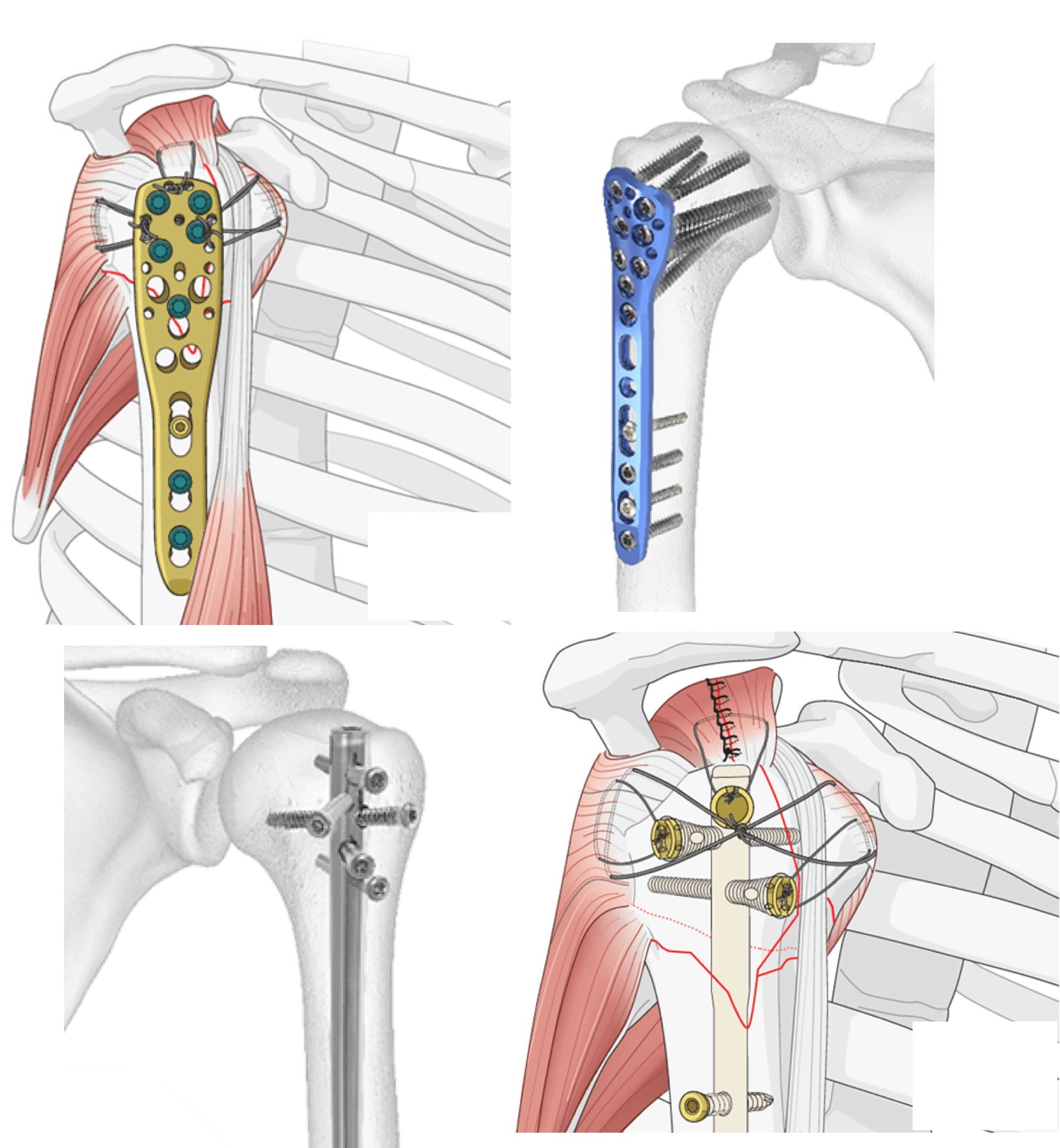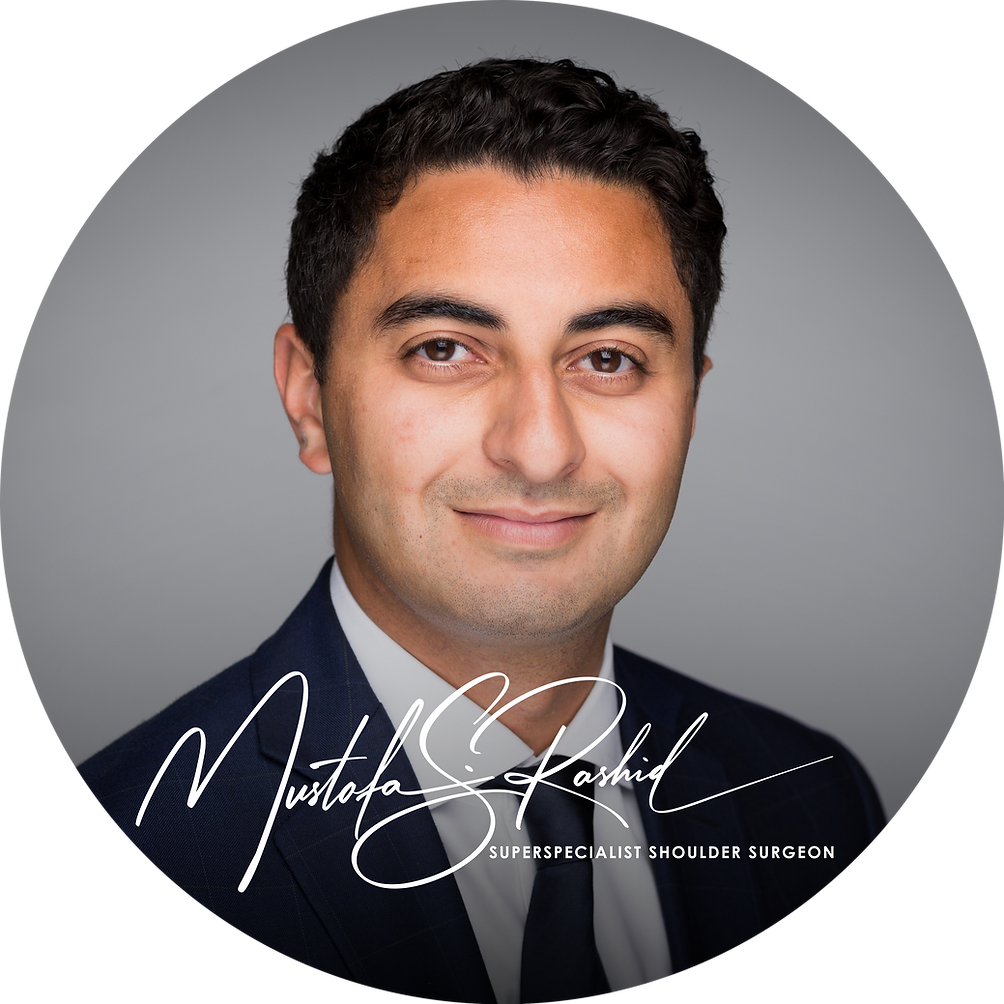Shoulder Fracture Fixation Surgery

Overview
Fractures of the shoulder mainly involve the top of the arm bone, the humerus. This makes up the ball of the shoulder joint. This part of the bone has important muscles attached to it that may move the fragments out of position. Fixation involves a variety of different surgical techniques that essentially are aimed at restoring the normal position of these fragments. This is done by either plates and screws, or a rod within the bone and screws. Some patients over 65 years old may choose to have a reverse shoulder replacement for their fracture (not covered in this info sheet).
Indications for Surgery
Surgery is not essential for these fracture to heal, but patients may choose to have surgery to improve the chances of healing in a good position, if the fracture fragments are moved far out of position. Occasionally, certain fracture patterns will do badly if not treated surgically, such as one where the ball is dislocated or where the fracture is unlikely to heal. These are thankfully less common. Earlier pain relief and return to function may be secondary indications for considering surgery.
Pre-Surgery Tests and Assessment
Before any surgery to the shoulder, a variety of assessments and tests, such as X-rays, and a CT scan are performed. The CT scan is used to create a 3D model of your fracture, to better understand how to fix it well. Dr. Rashid will assess how the severity of the fracture, how many parts there are, and how far have those parts moved out of position carefully. Dr. Rashid will offer you his advice on the best method of fixation and what that entails before you decide.
Procedure Details
Surgery for shoulder fracture comes in two forms: For certain fracture types, Dr. Rashid believes the best way to fix the fracture is with a rod inserted into the bone and screws to hold the fragments. This is done with several small incisions around the shoulder and arm. For more complex fractures, a 10cm incision is made at the front of the shoulder and the fragments are held in their correct position using a plate and screws. Both techniques are performed under general anaesthesia.
Both types of implants are designed to remain inside the body indefinitely, unless they cause significant problems, which is rare.
The skin incisions are closed with stitches that are absorbable and buried under the skin. Dressings and a sling are then applied.
Risks and Complications
The risks of shoulder fracture surgery are generally not common, however, most people experience stiffness that requires some time to resolve with physiotherapy. Other risks include infection, failure of fixation, the bone not healing, a scar, pain, and nerve injury (rare). In some fractures, the blood supply is disrupted from the break, and this may result in the bone dying and arthritis. If this occurs, you may require another operation. Dr. Rashid has carefully trained over many years to perform this operation and can do so safely and effectively.
Recovery and Rehabilitation
Recovery following this type of surgery is defined in various ways. In the first few weeks, the shoulder will be placed in a sling and you will be encouraged to keep your hand, wrist, and elbow mobile. Sleeping in the first month can be difficult, and it is recommended that you sleep on your back in a more upright position with pillows to support your elbow. After the wound has healed (typically 2 weeks), shoulder movements, guided by your physiotherapist will commence. Dr. Rashid will provide you and your physiotherapist with a protocol to guide your rehab. Physiotherapy is helpful to ensure you regain your motion, function, and strength of the shoulder. Pain relief is often appreciated in the first month. Stiffness and strength to near normal may take up to a year to return. A large proportion of patients may feel that their shoulder is not normal, even with successful surgery and extensive rehabilitation.
Expected Outcomes
Most people can return to work after 2 weeks if they do not have a physically demanding job. Most people can return to manual work and sports between 3 and 6 months after surgery. The success rates of this surgery are typically greater than 80%. The commonest reason for prolonged recovery is stiffness. Patients that avoid one of the possible complications generally are satisfied with their outcome.
About the Author

Mustafa Rashid
Dr. Mustafa Rashid is an award-winning, well published superspecialised surgeon from the UK, specialising in shoulders
